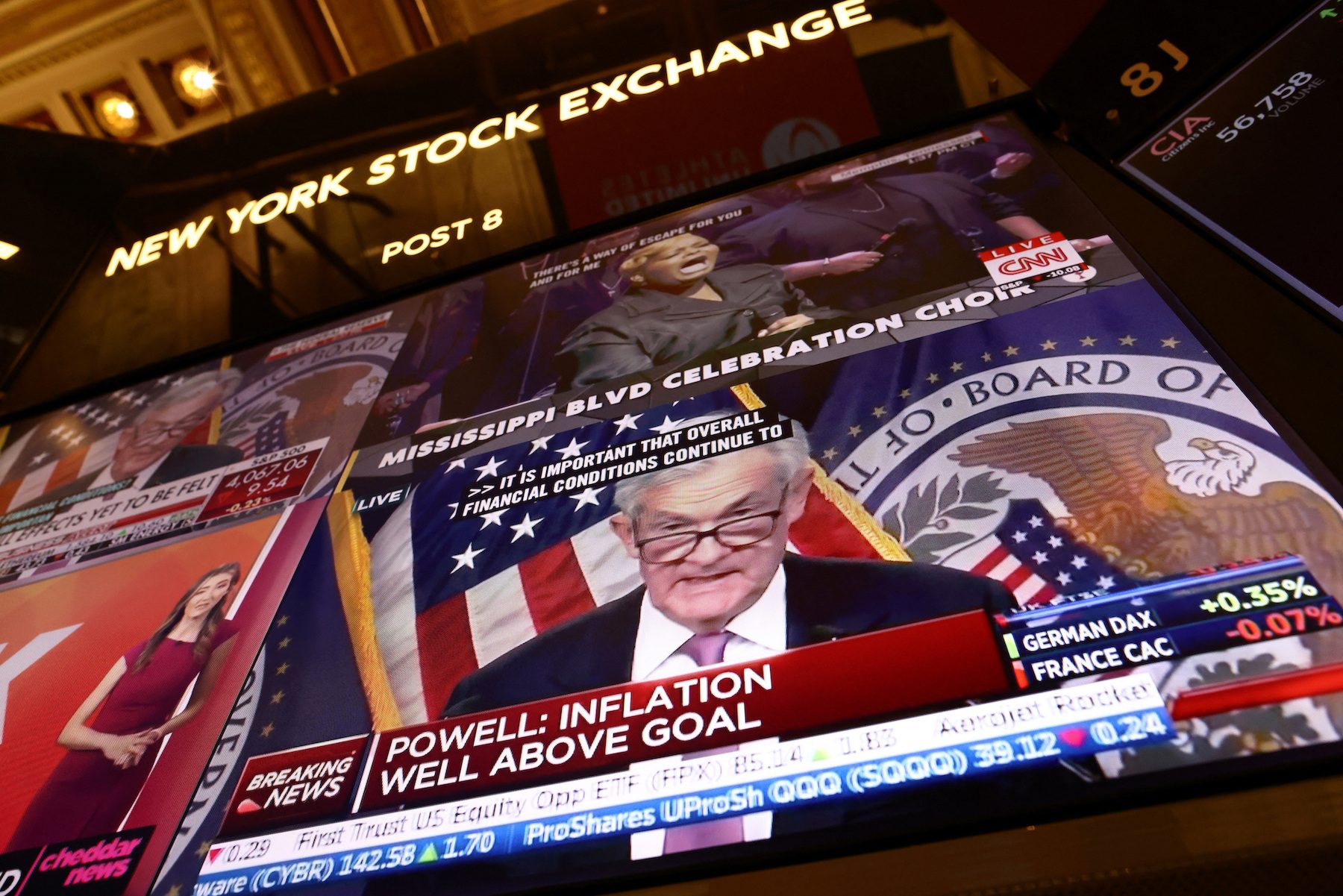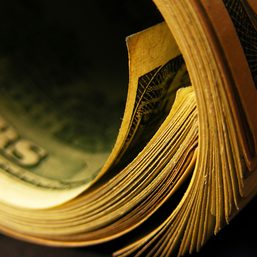SUMMARY
This is AI generated summarization, which may have errors. For context, always refer to the full article.

NEW YORK, USA – A gauge of global stocks rallied and the US dollar slumped on Wednesday, February 1, after the Federal Reserve raised its target interest rate by the expected 25 basis points (bps) but comments from Chair Jerome Powell were interpreted as dovish by the market.
The Fed said the US economy was enjoying “modest growth” and “robust” job gains, with policymakers still “highly attentive to inflation risks” as it seeks to tighten financial conditions and rein in high prices. Markets have been pricing in the possibility of a rate cut by the Fed in the back half of the year.
On Wall Street, US stocks were choppy after the Fed announcement but began to rally after Powell acknowledged inflation was starting to ease and the disinflationary process was at an early stage.
“The market’s reaction implies investors feel we are much closer to the end than we are, let’s say, to the middle of the rate tightening cycle,” said Sam Stovall, chief investment strategist at CFRA in New York.
“You certainly need disinflation in order to get down to your inflationary target and even though he did say multiple times that we are not yet at a sufficiently restrictive policy stance to bring inflation back down to 2%, the other statements implied that we are getting pretty close.”
The Dow Jones Industrial Average rose 6.92 points, or 0.02%, to 34,092.96, the S&P 500 gained 42.61 points, or 1.05%, to 4,119.21, and the Nasdaq Composite added 231.77 points, or 2%, to 11,816.32.
The gains sent the S&P 500 to its highest close since August 25.
Before the policy announcement, economic data painted a mixed picture, with a labor market that remains strong while manufacturing activity continues to weaken, showing contraction for a third straight month.
Investors have viewed a weaker labor market as a key component to bring down stubbornly high inflation.
Earnings season with earnings from names such as Apple and Amazon are due on Thursday, February 2.
Early gains for European shares faded to close virtually unchanged ahead of the Fed statement, although industrial stocks, up 0.85%, were a bright spot. On the heels of the Fed, the European Central Bank (ECB) and Bank of England will make their policy statements on Thursday, in which each is largely expected to hike by 50 bps.
The pan-European STOXX 600 index closed down 0.03% and MSCI’s gauge of stocks across the globe gained 1.08%. MSCI’s index hit its highest intraday level since August 17 and was poised for its biggest one-day percentage gain since January 20.
Data on Wednesday showed headline inflation in the eurozone moderated to 8.5% in January, from 9% in December, while core prices picked up to 7% from 6.9%, likely keeping pressure on the ECB to raise interest rates aggressively.
The dollar started February on a lower note, continuing its weakening trajectory of the previous four months, losing further ground after Powell’s comments, hitting its lowest level since late April. The dollar index fell 0.901%, with the euro up 1.11% to $1.0983.
The Japanese yen strengthened 0.83% versus the greenback at 129.02 per dollar, while sterling was last trading at $1.2371, up 0.41% on the day.
US Treasury yields initially moved up after the statement but reversed course and mostly fell after Powell’s comments were still lower on the day, as benchmark 10-year notes were down 10.5 basis points to 3.424%, from 3.529% late on Tuesday, January 31, although the two-year yield briefly turned higher after the most recent batch of economic data.
Despite the drop in the dollar, US crude settled down 3.12% to $$76.41 per barrel and Brent settled at $82.84, 3.07% lower on the day after US government data showed big builds in inventories while the Organization of the Petroleum Exporting Countries and its allies kept to their output policy. – Rappler.com
Add a comment
How does this make you feel?





There are no comments yet. Add your comment to start the conversation.